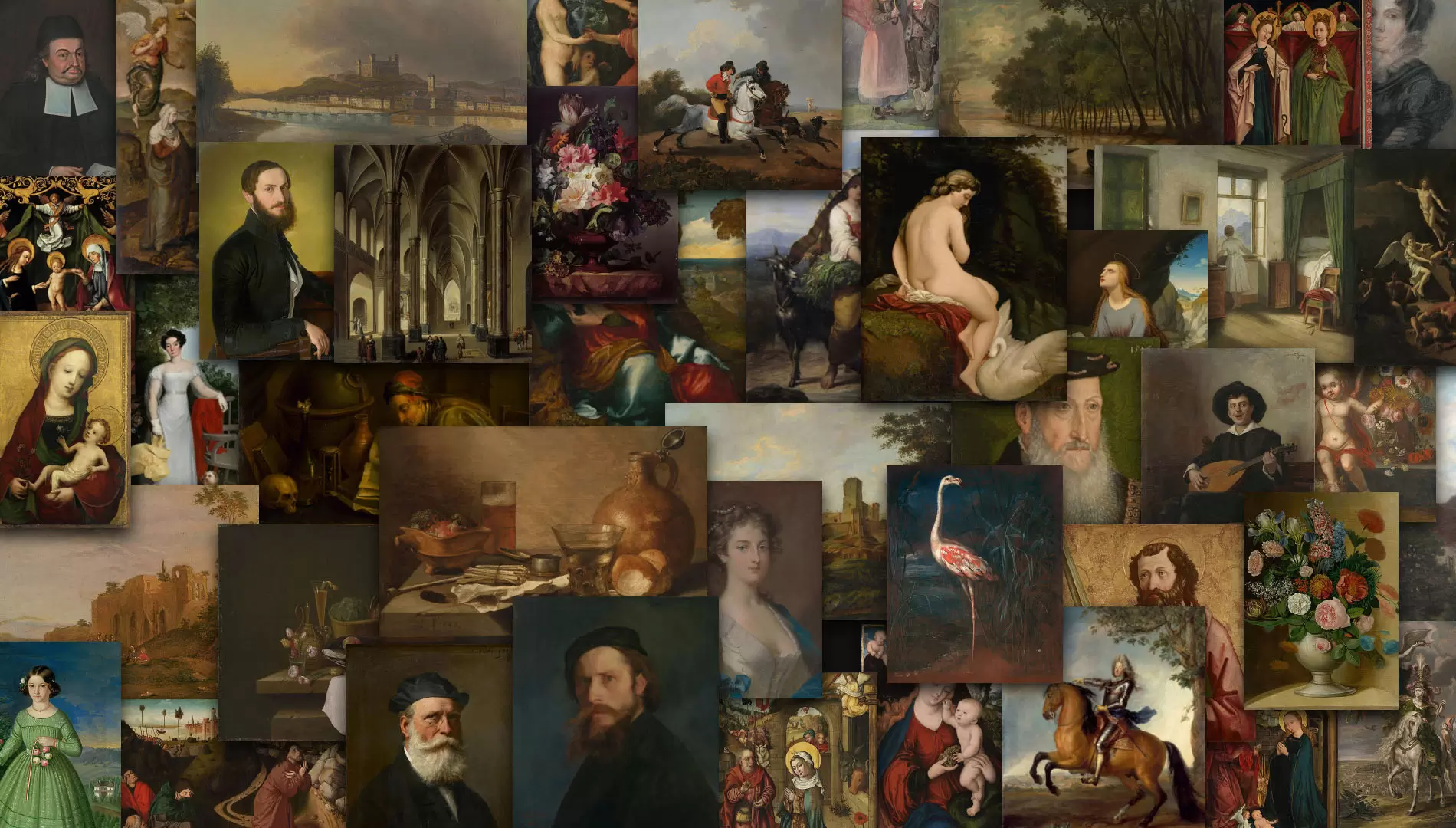DIGITALCURATOR.ART: Exploring motifs and themes in central European fine art with the aid of computer vision
Unlock the secrets of Central European art with Digital Curator's revolutionary use of computer vision. Interview with founder Lukas Pilka.


The Digital Curator app allows users to delve into art collections of Central European museums, searching for artworks based on specific themes. This project has received generous support from UMPRUM, the Academy of Arts, Architecture and Design in Prague, the Czech Republic’s Ministry of Education, the Slovak National Gallery, and the BlueGhost digital agency. App users can craft their own object combinations, revealing the historical frequency of subjects across centuries. They can explore graphics, drawings, or paintings portraying these subjects through different epochs and compare their data with other themes.
Throughout history, paintings have journeyed, changed hands, and found homes in various collections. Central Europe boasts a shared cultural history; while borders did exist, they did not restrict movement and shifted frequently. Artworks that were once linked now reside in separate collections, dispersed across multiple museums in different countries.

The Digital Curator provides a quantitative cultural history perspective, emphasizing symbolic and iconographic theme frequencies across artifacts rather than a detailed examination of individual pieces. This broader view proves invaluable for exploring genres over specific works, understanding wider societal contexts beyond the lives of artists, or interpreting general political landscapes rather than the views of specific authors. Researching this vast cultural-historical data reveals new insights into abstract societal phenomena such as cultural and economic influences, matters of canon, core-periphery dynamics, and the functioning of the art market. It also helps in tracking motif migration and its spread across centuries and distant regions.
The Digital Curator database houses 196,116 works from 91 museums in Austria, Bavaria, the Czech Republic, and Slovakia. Of these, 71,410 are available under an open license for online viewing. The remaining works contribute to statistics, highlighting motif occurrence frequencies. The AI library TensorFlow and Google Cloud services, including Google Cloud Vision, are utilized to automatically detect the depicted motifs. Data searching and storage are managed by the ElasticSearch database, while the Google App Engine drives app functions.
.ART spoke with Lukas Pilka, the founder and designer of digitalcurator.art and .ART ambassador, who contributed to the project from 2019 to 2022.
Your background is in Digital Design, correct?
Yes, I’ve been in the realm of digital design for roughly 25 years. I began as a Digital Designer, focusing on web design. My studies encompassed informatics, coding, programming, alongside art history, curating, and museum collections. Thus, I’ve always strived to merge the worlds of digital design and art.

Tell us about your project, digitalcurator.art. How did it begin? Where did the inspiration come from?
The Digital Curator project is an extension of my PhD, which I recently completed at the Academy of Arts and Design in Prague. My thesis revolved around culture, history, big data, and specifically, exploring this data with artificial intelligence, especially computer vision. I harnessed computer vision algorithms to sift through and examine the vast data from museum collections, primarily those in Central European institutions like Slovakia, the Czech Republic, Austria, and Germany. Typically, when discussing big data, one references three sources: social data (like posts on social media), dimension data (from devices such as smartphones and Wi-Fi routers), and transaction data (from orders, payments, etc). My focus, however, was on historical cultural data from institutions: galleries, libraries, archives, and museums. A pressing question for me was discerning how to interpret one million artworks, given the impracticality of examining such a volume using traditional art historical methods. My work centered on art historical data – predominantly digitized paintings, drawings, and prints spanning from the medieval era to the early 20th century. There isn’t a singular method for scrutinizing a digitized corpus, nor is there just one kind of computer vision. Working in computer vision demands the development of diverse algorithms, which need to be synergized. We commenced the creation of specific computer vision models, trained explicitly on pre-modern Central European artworks. It felt akin to traveling back in time. I collaborated with the Department of Art History at my university to label and select this learning data. Once I had a database of around 200,000 digitized artworks from Central Europe, I could scour the entirety of the data using computer vision algorithms, inspect specific motifs, and attempt a frequency analysis to determine the popularity of particular motifs in various eras. With Digital Curator’s assistance, we can infer overarching trends in art history and styles, grounding our conclusions not merely on narratives and qualitative research but bolstering them with quantifiable data.
What’s next for your research? Do you plan on delving deeper into museum collections, spanning a broader geographical range or longer time frames? It seems that a larger scale might foster more interconnectivity.
After obtaining my PhD, I was at a crossroads about how to progress. I contemplated two avenues: persisting with academic research or transitioning to the creation of museum software. I opted for the latter, aiming to translate my academic work into a practical product.
Why did you choose the .ART domain extension for the Digital Curator project?
My decision was straightforward. My work revolves around historical Central European art, which made .ART an apt choice. However, paired with ‘digitalcurator’, the domain assumes a richer meaning. While the term ‘curator’ has varied interpretations, not solely in the art sphere, I chose .ART to accentuate my specific area of interest.





